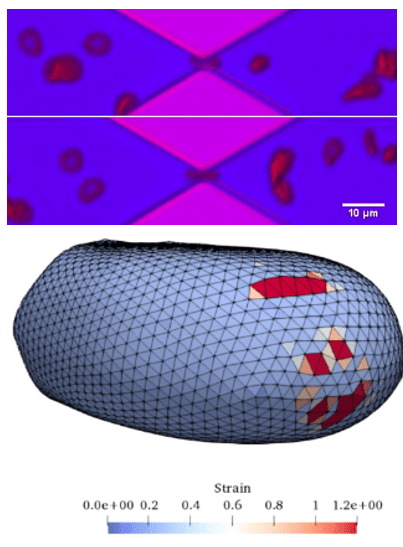We have developed a multiscale red blood cell membrane damage model. A localized coarse-grained molecular dynamics model in the high-stress region is concurrently linked with a network-based cellular membrane model to characterize pore formation and hemoglobin release. We couple the membrane damage model with local fluid flow through the Immersed Boundary Method to study cell deformation, pore growth, and membrane rupture. Each sub-model is validated through a series of relevant experiments using microfluidic channels and FDA-approved heart pumps. We have implemented the developed multiscale model through a cloud-based website to predict hemolysis in any medical device.
- Razizadeh, M., Nikfar, M., Paul, R. & Liu, Y. Coarse-Grained Modeling of Pore Dynamics on the Red Blood Cell Membrane under Large Deformations. Biophys. J. 119, 471–482 (2020).
- Nikfar, M., Razizadeh, M., Paul, R. & Liu, Y. Multiscale modeling of hemolysis during microfiltration. Microfluid. Nanofluidics 24, 33 (2020).
- Paul, R., Zhou, Y., Nikfar, M., Razizadeh, M. & Liu, Y. Quantitative absorption imaging of red blood cells to determine physical and mechanical properties. RSC Adv. 10, 38923–38936 (2020).
- Nikfar, M, Razizadeh, M, Zhang, J, Paul, R, Wu, ZJ, Liu, Y. Prediction of mechanical hemolysis in medical devices via a Lagrangian strain-based multiscale model. Artif Organs. 2020; 44: E348– E368.
- M. Nikfar, M. Razizadeh, R. Paul, Y. Liu, “Numerical Simulation of Intracellular Drug Delivery via Rapid Squeezing”, Biomicrofluidics, 15, 044102, 2021


Recent Comments